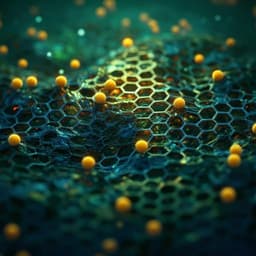
Environmental Studies and Forestry
Efficient generation of ¹O₂ by activating peroxymonosulfate on graphitic carbon nanoribbons for water remediation
W. Tang, Z. Wang, et al.
This research by Weijiang Tang and colleagues unveils an innovative method to generate singlet oxygen for water purification, utilizing graphitic carbon nanoribbons and peroxymonosulfate. The findings highlight the system's remarkable efficiency in degrading organic pollutants, paving the way for advanced water remediation techniques.
~3 min • Beginner • English
Related Publications
Explore these studies to deepen your understanding of the subject.







